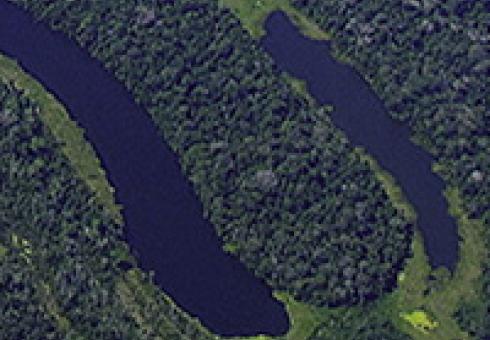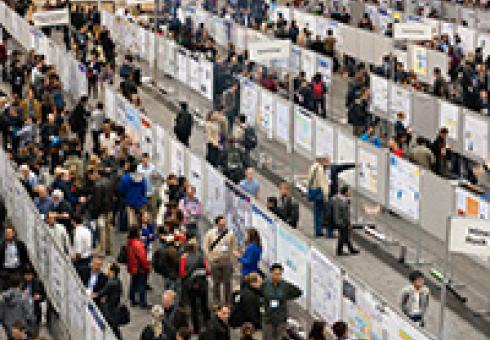News + Media
John Reilly interviewed on PRI's The World
Jason Margolis | PRI’s The World
If you’re in the oil business, you might think your best days are in the rear-view mirror. Oil is selling for rock-bottom prices. Your product is blamed for destroying the planet. And here’s what the leader of the free world thinks of oil.
“We’ve got to accelerate the transition away from old, dirtier energy sources. Rather than subsidize the past, we should invest in the future,” said President Obama during his recent State of the Union address.
To state the obvious though, if you’re an oil company, you produce oil. Energy economist John Reilly at the MIT Sloan School of Management says companies like ExxonMobil and Chevron are facing a classic business challenge.
“Could the horse and buggy manufacturers become automobile producers? Or is some other company going to because they’re more innovative, or not bound by what they’re already doing?" asks Reilly.
But before we pity the poor oil companies, remember, these are the richest companies in the world.
“Most of them have lots of cash. And so, if there’s a successful alternative, if they don’t develop it, they probably can acquire those companies and transition that way,” says Reilly.
. . .
Read the full article and hear the broadcast at Public Radio International’s The World.
Photo: Norwegian company Statoil plans to build the first floating wind farm off the Scottish coast. (Photo courtesy of Statoil)
MIT will host a daylong symposium to address the nexus of science and action on climate change.
Helen Hill | EAPS
The MIT Department of Earth, Atmospheric and Planetary Sciences (EAPS), together with the Lorenz Center and the MIT Alumni Association, are hosting a climate symposium on Jan. 27 in the Kirsch Auditorium of the Stata Center (Room 32-123).
While this event is now fully subscribed, the day's proceedings will be available via a live webcast. (Register to watch.)
Taking action on climate change has become a dominating issue — globally, nationally, locally, and even here at MIT. Yet so many questions remain. How much and how quickly will climate change? How will these changes manifest, and where? What are the greatest risks posed by a changing climate and how likely are these worst-case outcomes? What is the science behind climate change, and how can basic research inform our efforts to avert, mitigate and adapt to its impacts?
Essential knowledge built through basic climate research lies at the core of all these questions. We would not even recognize that Earth’s climate is changing were it not for the cumulative efforts of climate scientists over the past five decades, many of them here at MIT. And we cannot hope to improve the climate outcome for ourselves and future generations without the vital, ongoing contributions of fundamental climate science research.
Touching on everything from the essentials of planetary climate through the complexities of Earth’s climate system to the challenges of finding the will to act on our knowledge to address current climate change, the symposium features talks and discussion by faculty experts from across the spectrum of climate research at MIT, plus keynote speakers Marcia McNutt (editor-in-chief of Science) and Justin Gillis (environmental science writer for The New York Times).
Speakers include:
Daniel Cziczo, MIT Department of Earth, Atmospheric and Planetary Sciences
Elfatih A. B. Eltahir, MIT Department of Civil and Environmental Engineering
Lindy Elkins-Tanton, Arizona State University
Kerry Emanuel, MIT Earth, Atmospheric and Planetary Sciences
John Fernandez, MIT Environmental Solutions Initiative
W. Eric L. Grimson, MIT Chancellor for Academic Advancement
Valerie Karplus, MIT Sloan School of Management
Thomas Malone, MIT Sloan School of Management
John Marshall, MIT Department of Earth, Atmospheric and Planetary Sciences
David McGee, MIT Department of Earth, Atmospheric and Planetary Sciences
Ronald Prinn, MIT Department of Earth, Atmospheric and Planetary Sciences
Sara Seager, MIT Department of Earth, Atmospheric and Planetary Sciences
Noelle Selin, MIT Institute for Data, Systems and Society and Department of Earth, Atmospheric and Planetary Sciences
Lawrence Susskind, MIT Department of Urban Studies and Planning
Dennis Whyte, MIT Department of Nuclear Science and Engineering
Maria Zuber, MIT vice president for research
For more information and a detailed agenda, visit the EAPS symposium website.
Image: Jennifer Fentress/EAPS
What does global warming mean for extreme snowfall?
Andrea Thompson | Climate Central
In case you haven’t heard, Washington, D.C., and other parts of the Mid-Atlantic region, are about to get walloped by a major storm that could bury the city in a record-breaking amount of snow.
The storm is expected to bring snows that could top 2 feet in the D.C. area and has already resulted in thousands of cancelled flights. While snows may not be quite as impressive further north, the storm’s fierce winds could whip up significant coastal flooding.
Part of the reason this Snowzilla storm is expected to dump so much snow is because it is pulling abundant moisture. As the planet warms because of excess heat trapped by human-emitted greenhouse gases, the atmosphere can hold more moisture. Scientists already expect heavy downpours to increase because of that. But there’s been little research into what that means for “epic blizzards” like this one.
It might seem that more moisture in the atmosphere along with warming temperatures should mean more rain than snow, and that’s true. But, it turns out, that’s only part of the story.
On Thursday, MIT climate researcher Paul O’Gorman reviewed a 2014 study he conducted that is one of the few to look at extreme snowfalls and warming. Speaking before a group of scientists during a talk at Columbia University, he detailed his use of climate models to look at how extreme snowfalls might change as the planet heats up. Global temperatures have already risen by nearly 2°F (1°C) since the late 1800s.
O’Gorman found that while both average annual snow amounts and extreme snowfalls would decline as temperatures rose, the extremes didn’t drop off as rapidly. Effectively, extreme snowfalls would become a bigger proportion of all snow events.
The reason for this disparity, O’Gorman found, has to do with the very particular temperature conditions in which extreme snows occur, sort of like a frozen version of the Goldilocks tale: If it’s too warm, you get rain, not snow, but if it’s too cold, there won’t be enough moisture in the air to fuel a full-on blizzard.
But looking across a winter, snows in general will occur across a wider band of temperatures—essentially, less warming is needed to chip away at the temperatures that produce all snow than the narrow band where extreme snows occur.
One possible exception to this decrease could be in very cold places, such as the Canadian Arctic, where even with warming it would still be cold enough to snow, but the temperature increase would mean more moisture to fuel that snow.
O’Gorman’s study is one of very few to look at the issue of warming and extreme snowfalls, and, to date, the pattern he identified has yet to be seen in snowfall observations, he said. He suspects this is because there are fewer snow observations than those for rain because snow happens over a much smaller area of Earth’s land surface.
“I don’t expect the signal on snowfall to emerge for another 20 years or so,” O’Gorman said.
That study also only looks at one specific aspect of snowstorms. Another relatively unexplored factor is how warming might influence the storms, called extratropical cyclones, that actually bring the snow as they sweep across the country. Some research has suggested that, like hurricanes, these systems could become less frequent, but those that do occur will be more intense, but it’s still an active area of research.
Discerning any role of warming in fueling this specific storm would require a specific attribution study, but one expected impact of this storm that does have a clear connection to climate change is the coastal flooding it could bring to areas from Maryland up to Long Island. As sea levels continue to rise from global warming, nor’easters and other intense storms are more likely to cause damaging floods.
But for a better picture of what the Snowpocalypses of the future might look like, much more research remains to be done.
This article is reproduced with permission from Climate Central. The article was first published on January 22, 2016.
Photo:

B.B. Cael - The 2016 Basics of Climate Science course surveys the fundamentals of climate science, emphasizing radiation and greenhouse gases, the carbon cycle and earth’s heat storage.
Evaluation of land resources by the U.N.’s Food and Agriculture Organization suggest availability of arable land itself is not a major constraint on food production at least through mid-century, assuming continued yield improvements. There are, however, some wild cards that could vastly impact agriculture in the coming decades.
The largest hydroelectric project in Africa has so far produced only discord
The Economist
WHEN Egyptian politicians discussed sabotaging the Grand Ethiopian Renaissance Dam in 2013, they naturally assumed it was a private meeting. But amid all the scheming, and with a big chuckle, Muhammad Morsi, then president, informed his colleagues that their discussion was being broadcast live on a state-owned television channel.
Embarrassment apart, it was already no secret that Egypt wanted to stop the largest hydroelectric project in Africa. When Ethiopia completes construction of the dam in 2017, it will stand 170 metres tall (550 feet) and 1.8km (1.1 miles) wide. Its reservoir will be able to hold more than the volume of the entire Blue Nile, the tributary on which it sits (see map). And it will produce 6,000 megawatts of electricity, more than double Ethiopia’s current measly output, which leaves three out of four people in the dark...
EXCERPTS:
. . . A sense of mistrust hangs over the dam’s ultimate use. Ethiopia insists that it will produce only power and that the water pushing its turbines (less some evaporation during storage) will ultimately come out the other side. But Egypt fears it will also be used for irrigation, cutting downstream supply. Experts are sceptical. “It makes no technological or economic sense [for Ethiopia] to irrigate land with that water,” as it would involve pumping it back upstream, says Kenneth Strzepek of the Massachusetts Institute of Technology. . .
. . . How much water Sudan uses in the future, and other variables such as changes in rainfall and water quality, should determine how the dam is operated. That will require more co-operation and a willingness to compromise. Disagreement between Egypt and Sudan over such things as the definition of “significant harm” bodes ill. But all three countries will benefit if they work together, claims Mr Strzepek, citing the dam’s capacity to store water for use in drought years and its potential to produce cheap energy for export once transmission lines are built. . .
Read the article in The Economist.
Photo: Landsat-7 satellite image of the bend in the Nile River and adjacent farmland (Photo courtesy of Jesse Allen, NASA)




